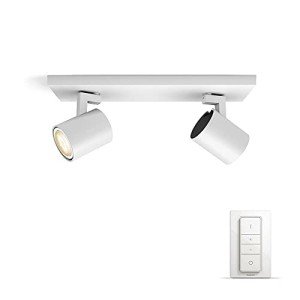Contemporary Lighting in the UK: Transforming Spaces with Illumination
Lighting plays an essential function in specifying the ambiance and functionality of any area. In the UK, contemporary lighting has actually become a significant style component, providing innovative solutions that mix aesthetic appeals with practicality. This short article looks into the numerous designs, materials, and innovations shaping contemporary lighting, along with tips for choosing the most suitable fixtures for numerous settings.
The Evolution of Contemporary Lighting
Contemporary lighting in the UK reflects the altering tastes and technological developments in style. It encapsulates a broad range of designs, including:
- Minimalist: Characterized by simpleness and tidy lines, minimalist lighting fixtures focus on form and function without unneeded decorations.
- Industrial: Inspired by metropolitan settings, industrial lighting combines raw products like metals and woods with strong styles, creating edgy, practical pieces.
- Scandinavian: Known for its warmth and simplicity, Scandinavian lighting frequently includes soft colors and natural products, concentrating on developing a comfortable atmosphere.
- Smart Lighting: This modern pattern integrates technology with design, permitting users to control their lighting with mobile apps, voice commands, or automation systems.
To show the development and range in the field of contemporary lighting, consider the table below, which highlights key attributes of various designs.
| Style | Key Characteristics | Popular Materials | Suitable Spaces |
|---|---|---|---|
| Minimalist | Easy, practical designs | Metal, glass, wood | Modern homes, offices |
| Industrial | Raw, incomplete appearance | Steel, concrete, wood | Lofts, galleries |
| Scandinavian | Cozy, warm aesthetics | Natural fibers, light wood | Living spaces, coffee shops |
| Smart | Integrated innovation, automation | Varies extensively | Houses, offices, retail spaces |
Selecting Contemporary Lighting Fixtures
Selecting the ideal lighting fixtures for a space requires cautious consideration of a number of factors. Here are crucial elements to keep in mind:
1. Function of the Space
Before picking fixtures, think about the designated use of the area. Various functions need various kinds of lighting:
- Task Lighting: Focused illumination for activities such as reading, cooking, or studying. Examples include table lamps and under-cabinet lights.
- Ambient Lighting: General lighting that offers overall lighting. Ceiling lights and pendant fixtures fall under this classification.
- Accent Lighting: Designed to highlight specific features or areas, such as artwork or architectural details. Wall sconces and track lighting are typical choices.
2. Style and Theme
The lighting needs to complement the existing decoration. Choose for fixtures that match or boost the overall theme of the space, whether it's contemporary, rustic, or diverse.
3. Size and Scale
Think about the percentage of the lighting fixtures relative to the space. A large chandelier may look stunning above a roomy table, while smaller sized pendant easy work well in compact settings.
4. Energy Efficiency
With rising energy costs and environmental issues, picking energy-efficient lighting choices is necessary. LED lights are an excellent choice, offering durability and lower energy intake.
5. Versatility
In modern style, flexibility is key. Fixtures that can be changed or repositioned enhance functionality, allowing users to create different environments as required.
Popular Contemporary Lighting Brands in the UK
The contemporary lighting market in the UK boasts many brand names known for their innovative designs and quality workmanship. Some notable discusses consist of:
- FLOS: An Italian brand name commemorated for its creative and renowned lighting fixtures that often double as pieces of art.
- Tom Dixon: A British designer recognized for his modern, industrial designs that magnificently include metal and light.
- Anglepoise: Known for its flexible, functional lamps, ideal for a range of settings from home workplaces to innovative studios.
- John Lewis: Offers a variety of contemporary lighting options that cater to a broader audience, consisting of affordable yet elegant options.
Frequently Asked Questions about Contemporary Lighting in the UK
1. What is contemporary lighting?
Contemporary lighting refers to lighting styles and fixtures that show existing design trends, often defined by clean lines, ingenious shapes, and using modern products and technologies.
2. How do Lighting Store UK pick the best lighting for my home?
Think about the function of the room, existing décor, size of fixtures, energy performance, and versatility. Examine how each piece will add to the total ambiance and functionality of your area.
3. What are some energy-efficient lighting choices offered in the UK?
LED lights are the most popular energy-efficient option, understood for their long life expectancy and low energy usage. Compact fluorescent lights (CFLs) and halogen bulbs are other alternatives.
4. Where can I buy contemporary lighting in the UK?
Contemporary lighting can be discovered in different retail outlets, both online and in physical stores. Significant retailers consist of John Lewis, Habitat, and specialized lighting shops.
5. Can contemporary lighting operate in traditional spaces?
Definitely! Contemporary lighting can improve traditional spaces when selected attentively. Choosing fixtures with a balance between modern and timeless aspects can develop an unified style.
Contemporary lighting in the UK represents more than just lighting; it embodies style innovation and imagination, transforming areas and improving performance. As patterns continue to progress, house owners and designers alike can explore an extensive range of designs and innovations, guaranteeing that every room bursts with life, heat, and character. By thinking about the vital elements detailed in this post, one can curate a collection of lighting fixtures that resonates with individual style and fulfills practical needs, eventually forming comfy and visually enticing environments.

